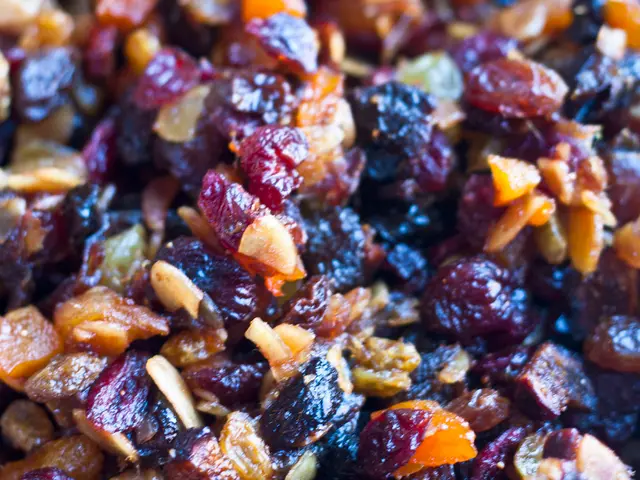Danish crops face apprehension due to prolonged dry spell across northern Europe
Northern Europe Faces Severe Drought, Threatening Crops and Water Resources
parts of northern Europe have endured their worst drought in decades, triggering concerns among farmers that the dry spell could compromise harvest yields if it persists.
Advertisement
Droughts can hamper the growth of staple crops such as wheat, corn, rapeseed, and barley, Nicolas Guilpart, an agronomy lecturer at the Agro Paris Tech research institute, told AFP.
Countries including Denmark, France, Belgium, Britain, and Germany have experienced significantly lower rainfall than usual in some areas this spring, leaving the soil arid and covered in dust. The dry weather has already delayed the start of the life cycle for crops that would typically have sprouted by now.
In early May, the Danish Meteorological Institute (DMI) warned that the previous three months had been exceptionally dry, with just 63 millimeters of rainfall. This is only the eighth time since 1874 that less rain has fallen during the period from February to April. Denmark has also experienced above-average temperatures for the time of year.
The country's drought index, which runs on a scale of one to 10, has hovered above nine since May 15th—the first time this has happened so early in the year since the index began in 2005.
Similar concerns have arisen from neighboring countries like Sweden and Germany. Between February 1st and April 13th, Germany recorded 40 liters of rainfall per square meter, its lowest level since records began in 1931, according to the German Weather Service (DWD).
The Federation of Swedish Farmers noted that it was too early to ascertain the impact on farming for the summer season, but advised farmers to reevaluate their water planning. Irrigation can help mitigate low rainfall, Guilpart said, but "you need the resources to do it."
Water for irrigation is mostly sourced from surface water bodies like rivers, lakes, and reservoirs or from groundwater using wells and aquifers.
In contrast, southern Europe, including Spain and Portugal, has seen up to twice the usual amount of rainfall for the season.
More
#Weather### Comments
Engage in our comments section below to share your thoughts and experiences. If you have any questions or suggestions for our journalists, reach out to us at news@our website. Please keep comments constructive, on-topic, and adhere to our terms of use.
To join the conversation, please log in here to leave a comment.
See Also
### 'Capitulation': How would Denmark cope in a Spain-like power blackout?### Denmark introduces work permit restrictions for students on 'unaccredited' programmes### Denmark homeowners with variable rate mortgages set to face higher payments### Denmark among EU states calling for rethink on European rights convention
Drought Status and Impact Across Europe
- The current drought in Denmark and northern Europe is severe and progressively worsening, presenting significant challenges for crop cultivation and water resources.
- Denmark is experiencing an exceptional period of dryness, with soil moisture levels surpassing 9 on a scale of 1 to 10 since mid-May, marking the driest ground conditions seen since the index began in 2005 [2][4]. Rainfall over the crucial early-spring months (February to April) was strikingly low, with only 63 millimeters recorded, and temperatures have been warmer than average for the season [2][4].
- Adjoining countries like the Netherlands and parts of Germany have also been severely affected by drought, with the Netherlands experiencing its driest period since records started in 1906 and Germany experiencing its lowest rainfall since 1931 [1][4].
- The European Drought Observatory reports that although some central and eastern European regions exhibit stable or improving drought conditions, northwestern Europe, including Denmark and its neighbors, has been placed under warning or watch drought statuses due to precipitation deficits and warmer temperatures [3].
- The impact on crop production in these regions is becoming increasingly dire, with the lack of rainfall and higher temperatures drying the soil, depleting river flows crucial for irrigation, and raising concerns about crop yields this year [1][4].
- In Denmark, while it is still early in the growing season, farmers are being advised to carefully reassess their water use and irrigation plans, as the soil is already significantly dry by mid-May. This could potentially threaten crop establishment and productivity [4].
- Similar concerns have surfaced in Germany, the Netherlands, and Sweden, where dry soil and diminished water availability threaten harvests and imperil agricultural output [4]. Some regions within France still await clearer implications as the season unfolds. The depletion of groundwater in some areas remains sufficient, but surface water deficits due to a lack of rainfall continue to stunt plant growth, underscoring the complex nature of drought impacts on agriculture across Europe [4].
Ultimately, Denmark and parts of northern Europe are currently grappling with a severe, record-breaking drought affecting the season's early-stage soil moisture levels. The evolving dry spell has the potential to compromise agricultural production and water resources, particularly if rainfall remains scarce [1][2][3][4][5].
The unusual dry weather in northern Europe has raised concerns about climate change and its effects on agricultural production. Articles discussing this situation often appear in environmental science, weather, and news outlets. Politicians might also address the issue, considering its impact on food supply and subsequently, the economy. Scientists are suggesting that droughts can affect the growth of crops, and countries in the affected region should consider adopting irrigation strategies, although it requires adequate water resources. This situation underscores the need for better understanding and preparedness in the face of changing weather patterns and environmental factors. The current drought status in countries like Denmark, France, Belgium, Britain, Germany, Sweden, and the Netherlands has been evaluated by various scientific institutions and meteorological services, providing necessary data to predict and manage the potential impacts on agriculture and water resources.







